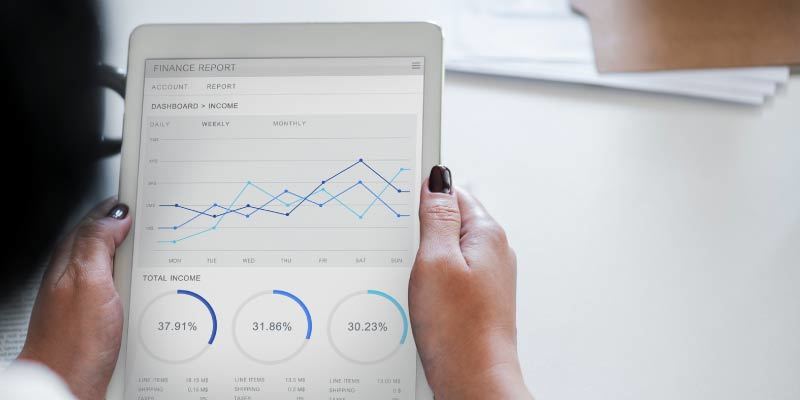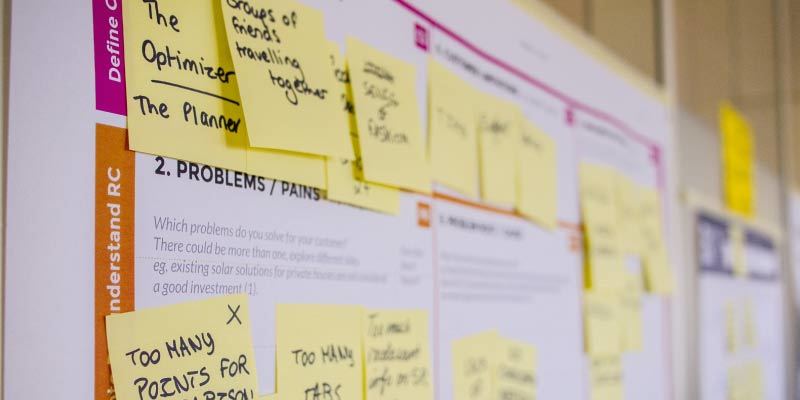If you have a website that’s outdated and ugly, you’re probably mulling over the idea of a website redesign. You probably already know that your website may be the source of your lagging sales and making an overhaul to the website may be the solution to turning your numbers around.
You may be tempted to burn your existing website to the ground, salt the earth, and start completely over, because anything is better than what you have right now, right?
Not so fast.
More...
No matter how big your company is or how heavily you lean on your website for sales and leads; a poor website redesign can be disastrous for your company and make your current customer challenges worse if you aren't careful.
I’ve talked with (and helped a few) companies who asked for my help after launching new websites to disastrous effect; conversion rates were down, SEO traffic tanked, and their customer service teams were overwhelmed with complaints. Their websites looked great but lacked the function that drove customer conversions. These companies desperately needed help to recover from a terrible website redesign and were looking for a magic wand.
“We hired this hotshot web designer take to redo our website completely, and it looks great, but it’s not performing, and now we’re losing money and customers.” Oops. Hopefully, you can't relate. It makes me cringe every time I hear it.
There are legitimate business reasons to redesign your website

- Your business is undergoing a 180-degree pivot and your customers, message, design and visual brand have all changed.
- Your customer base has changed radically over time (though this still doesn’t mean a total redesign is the right path).
- You want to provide a better, overall, user experience for your customers and don’t see how your current website can adapt to a better experience.
- It’s going to take longer and cost more money to “onesie-twosie” website fixes than if you redesigned your website from scratch.
Sometimes there are technical reasons to redesign your website

Your website suffers from significant technical issues that are nearly impossible to overcome without a wholesale change, and these could include:
- Platform issues - your website is built on a platform that prevents you from making needed content and usability updates.
- Technical features are old and don’t function properly or continue to break with every website update.
- Your site isn't responsive, and the opportunity cost of lost mobile traffic is one you can’t continue to ignore.
Most often, the reasons for a website redesign are rooted in “want” and gut feel.

"Want" is where most of the justification lies for redesigning websites.
- Your team, boss, or board wants something new. They’ve noticed a trend in website design and know deep in their bones; the newest online design trend would be a good fit for the overall look, feel, and function of the website. (side note: this is why Flash got super popular in the early 2000s)
- You “need” to redesign because your next closest competitor just launched a new site, new brand, new product. It’s reasonable to ask yourself, "What do they know that we don’t?” when your competitor makes a radical change - but it’s not necessary that you follow in lock-step
Most Complete Website Redesigns Fail - Here’s Why

- The redesign decision is rooted in subjective opinion (gut feel) instead of focusing on what’s “working” and the numbers/KPI’s that drive the business. There are no objective measures of success for a redesign project, no number-based goals to point to and say “Yes, the project is successful.” or “The ROI on our website redesign is XYZ.”
- The company tries to outcompete the competition, at any cost, and chases the New Shiny Object.
- There's no testing before or after the website redesign to understand how the website redesign impacted customers or changed the business metrics (for good or bad).
- The company hired the wrong website design firm, and neither the company nor the firm didn’t do their due diligence or research.
All of these points of failure have one thing in common: There is no customer involvement. They failed to build in customer research, data, and goals into their redesign plans.
Companies build in competitive differentiation into the core of their business, and customers honor this difference with their dollars. So why would a company leave their customer’s needs out of the website redesign planning? It's a little short sighted.
Examples of redesign successes
All full-site redesigns are not automatically doomed to failure (because companies do them all the time and live to tell the tale) but full redesigns have significant hurdles to overcome.
In my consulting career, I’ve helped with and directed successful website redesigns all of which included company data, customer data, and qualitative customer feedback before and after the site launch.
You bet I’m going to toot my own horn - I’m proud of the results I drive for my clients.
A few of my full-site redesign results
Steps to Help Failure-Proof Your Website Redesign Project

Treat Your Redesign Like a Major Company Project.
Because it is.
A website redesign is a major undertaking and should have the same priority, time, and financial resources provided to any other large project within the company. Website redesigns take a huge amount of coordination and resources, even if you’re a small business or fledgling startup. It's not a side project, it's a major channel and in many cases, the only revenue-driving point of contact for the company. Give the project space and time to succeed (and a dedicated project manager, no matter how small your team is).
Key points for success:
- Appoint a dedicated project manager.
- Identify key stakeholders and get their buy off early and frequently. Avoid the design by committee trap; it will absolutely cost you time and money.

Identify Goals & Success Metrics
Identifying project goals will codify how you want your website to perform - but takes a numerical approach instead of a subjective “gut feel.” It's important to define goals for the website in addition to each page that’s updated or changed.
These goals will guide the strategy for the website redesign and become the baseline measurements to determine success or failure for your project. It may be tempting, but do not skip this step.
Important elements to take into consideration when formulating your redesign goals:
What’s working on your website
- A steady rate of conversions
- A significant share of high-converting SEO traffic
- Relatively high time-on-site for high traffic pages
- Positive customer feedback and high levels of customer referrals
What’s NOT working on your website
- High bounce rate on key conversion point pages
- Fluctuating or declining conversions
- Negative customer feedback
- Increasing customer service volume
What do you want to make work better for your customers? (these are the goals that will drive a redesign)
- Increase customer conversions
- Increase customer engagement with the site
- Lower customer service calls/requests
- Higher Net Promoter Score (NPS)

Pre-Redesign Research
Research exists to give you data to make smart, informed, decisions. In the case of a website redesign, it exists to identify the ideal information architecture, content that grabs and holds attention and calls to action that moves the potential customer closer to the point of conversion.
- Measure conversion funnel attrition. Identify primary customer journeys from entry to conversion (your conversion funnels) and the critical points of attrition through these funnels. Use Google Analytics for this.
- Broken Links
- Dead ends
- High exit pages
- Site and page load times
- Do user testing. Watching your customers interact with your site is a great way to see first-hand how your customers consume your content, interact with the design, if or where they get stuck, how they respond to calls to action and more. It’s invaluable data that provides qualitative and quantitative findings that can improve many aspects of your business (beyond what’s on your website).
- Perform heat map testing. Heat maps are especially helpful for problematic or complex pages. Heatmaps allow you to determine what potential customers are looking at, where they linger, how they behave on these pages, how much they scroll, and more.
- Content and messaging audit. An audit of all of your content and messaging at a site level and page level will help determine the size and resources needed to make this part of the project successful for your customers. At a minimum the content on your site should be evaluated for:
- Relevancy - does it speak to your potential customer’s pain points and level of awareness?
- Recency - disposing of or repurposing old content.
- Effectiveness - does it help engage potential customers and move them to conversion.
*Don’t ditch any content until you can show, with data, that it’s not advancing your customer goals.

Project Task Prioritization
Evaluating the most important changes to make first, is a task you and your team will need to discuss. Some redesigns start from the bottom up, some jump in the deep end and start from the most valuable pages. Each strategy comes with risks, time allocation, and potential benefits.

Website & User Testing
Testing is one area where I see companies fail to allocate enough time and enough hands - and their website redesign projects pay the price when bugs go live. It’s embarrassing to have a customer discover and report a silly bug, like a broken link, that you should have caught before the website went live.
Before your site goes live make sure you invest the time and resources to do full end-to-end and top to bottom quality assurance testing. Everything on the website should work and look as expected.
- Quality Assurance Testing. QATesting isn’t a job just for the website developers. You and your team should be prepared to jump in and push and pull the website to see if you can get anything to break. It’s better to find and fix bugs before they go live than to have your customers stumble across them. A great website needs to function as well as it looks.
- User testing. Push a group of selected customers through the site before it goes live. Watch their reactions to the content, graphics, flow, and make a note of their comments, make sure they match the observations of your customers before the redesign and that they’re able to accomplish their goals on your new website.
- Future fixes. A website launch is just another milestone in your project. It’s not the finish line. There will be more testing and more tweaking and more bugs to fix - make sure you leave time, resources and budget for this critical phase of your website release.
- Post-launch Testing. After your launch make sure you get all hands on deck to do more testing in a live environment (using test data you can purge from your backend after testing is complete). Make sure all the tools (Google Analytics, Facebook, Google and Bing Ads, Salesforce, etc.) they use are hooked up and populating data correctly so everyone can do their jobs admirably and minimize any disruption.
Refreshing the design on your existing website doesn't mean starting from scratch.
In my past corporate career, the most successful improvements to conversion rate occurred through minor tweaks to the existing design.
In one particular case, simplifying and shortening the messaging for existing customers at a key point improved conversion rates by 3.8%. That seems like a small number, but it translated into a big revenue number for the company.
There is no “one size fits all” conversion optimization plan for every business. The key to improving your sales and overall website performance is twofold:
- Know your numbers (your key KPI’s - where they are now, what your goals are)
- Know your customers (who they are, why they buy, why they don’t buy, what their primary pain point or desire is, and the overall level of awareness they have of your company as a solution).

A few parting thoughts:
- Be aware of your own biases and preferences that can influence the outcome of the redesign project. Lean on the data to guide your decision making and don’t follow shiny objects.
- Consider the costs of switching your existing customers to a new interface - people don’t like change.
- Redesigns are disruptive - to your company, your customers, and your revenue. There is literally no way to get around this if you're going to redesign. The smart alternative to a total website redesign is to refresh your existing website.
- If you are 100% committed to a redesign make sure your decision is based on the results of your research instead of what you know “in your gut” will work.
- Use a proven framework for your redesign (like the one I’ve only loosely outlined), one that gives you control over the outcome and a way to implement continuous improvements over time.
- The path you take (incremental refresh vs. major overhaul) should align with business and customer goals. Lean on and leverage both qualitative and quantitative customer data to guide your decisions.
- If you redesign and your conversion rate and customer engagement plummet as a result - consider hiring me for an audit of your conversion funnel and get a detailed, prioritized list of things you can do to Fix It Fast.



